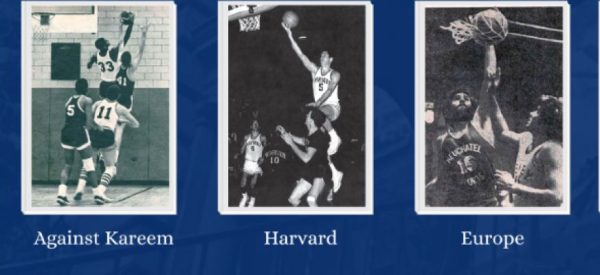News analysis: youth vote, third party candidates and polarization impact midterm results
After months of brutal campaigning, the midterm election of 2018 has finally come to a close. With startling upsets in primaries on both sides and a general election serving as a referendum on President Donald Trump, this whole election process has been the most exciting since 1800. Just to recap the results, the Democrats regained a slim majority in the House while the Republicans maintained their majorities in both the Senate and Governors’ mansions. But beyond who holds the power in Congress, it is essential to figure out why.
Democrats took a majority of votes cast in the Senate (56.8 percent) and House (51.2 percent) and a plurality in the governor races (49.2 percent). The primary reasons behind this victory were the tremendous enthusiasm and youth movement behind their cause. Take Texas, for example. As expected, the Democrats were trounced in the gubernatorial race (losing by more than one million), but the Congressional votes tell a significantly different story. Courtesy of a brilliant performance by Rep. Beto O’Rourke in his senatorial campaign, Democrats in Texas had a very nice night, successfully flipping two Republican districts (TX-32 and TX-7). In the 32nd district, they managed to defeat 21-year incumbent Pete Sessions, chairman of the powerful House Rules Committee. Texas clearly shows us the benefit of young, vibrant, top-of-ticket candidates. Beto O’Rourke is a national name, well-entrenched within the youth movement, and, as displayed by dropping an F-bomb in his concession speech, a very modern candidate. Although Beto lost, he is the reason Democrats won House races in Texas. Having good top-of-ballot contenders is the best way to win an election, and Democrats nationwide have realized this and are taking advantage of it.
Both parties had moderately successful nights, but neither of them were able to blow out the other. There was no blue wave, or red wave for that matter. So at each party’s headquarters, they’re asking themselves, “Why?” The most obvious answer is one that most people don’t even realize: disillusionment. No, 2 percent or 3 percent is not the same as 45 and 50 percent, but it’s still a large number of votes. To reference Texas again, Libertarian Senate nominee Neal Dikeman only secured 0.8 percent of the vote. But in a state as large as Texas, that’s 65 thousand votes, or over a quarter of the difference in votes between the Democratic and Republican nominees. This isn’t an isolated example either. Gary Johnson, a New Mexico Libertarian received over 15 percent of the vote in his senatorial race. In 5 of 71 statewide Senate and gubernatorial elections, third party votes made up the difference between the winner and the loser. Clearly, people aren’t liking their two options; they’re looking for other, better candidates who fit their ideas more accurately. Third parties have risen to prominence in a way we haven’t seen since Bush v. Gore v. Nader in Florida, and there’s no reason to expect that they will let up.
Another interesting conclusion that this election leads us to is just how polarized we as a society are in our political beliefs. This is evident in both California’s 50th district and New York’s 27th district. Each of these districts have a Republican incumbent, Duncan Hunter and Chris Collins respectively, and each of these incumbents are also both currently under indictment. Hunter won his election with a majority (56 percent) of the vote, beating out Democrat Ammar Campa-Najjar. Collins is currently leading his election 50 percent to 48 percent with 98 percent of the vote in. The most interesting part of this race wasn’t even that Collins was under indictment, but the fact that he actually suspended his campaign. In August, Collins said he would attempt to remove his name from the ballot, but in mid-September, he returned. He cited an inability to remove his name from the ballot as his reason for rejoining. However, though he lost weeks of valuable campaigning time, he still managed to win the election. The only logical explanation as to why people are voting for candidates under indictment is their underlying party loyalties. The American population has made it clear: party is now over country.
All in all, the 2018 midterm election was as interesting as the pundits expected. As was anticipated, Democrats took the House while Republicans held onto their Senate majority. But we cannot just take what these numbers say at face value. We need to read into them and figure out what they tell us. The numbers are suggesting trends towards younger, more contemporary candidates, towards third-parties who better represent one’s values, and towards diehard party bases which now value loyalty to party over loyalty to country. We as American citizens must recognize potentially dangerous trends and take action to prevent them, just as we must see the positive trends and learn to embrace them.
Nick Lieggi is a freshman at Oxford College of Emory University and was a member of the PMHS class of 2020. He began his journalism career at the Pelham...












